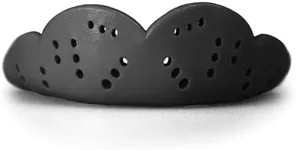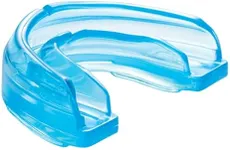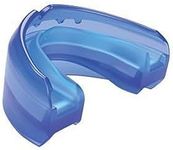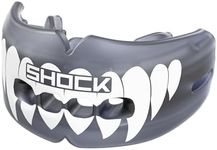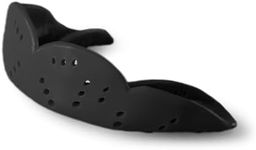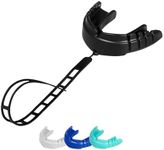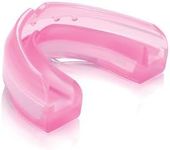Buying Guide for the Best Sports Mouthguard For Braces
Choosing a sports mouthguard for braces is important for anyone who plays contact sports and wears orthodontic braces. The right mouthguard not only protects your teeth and gums from injury but also shields your braces from damage. Since braces add extra bulk and have sharp edges, a regular mouthguard may not fit properly or provide enough protection. It's essential to look for a mouthguard designed specifically for braces to ensure comfort, safety, and effectiveness during sports activities.Fit and AdjustabilityFit and adjustability refer to how well the mouthguard conforms to your teeth and braces. A good fit is crucial because it keeps the mouthguard securely in place and provides maximum protection. Mouthguards for braces are usually made to be more flexible and roomy to accommodate the brackets and wires. Some are 'boil and bite' types, which you soften in hot water and then mold to your mouth, while others are 'instant fit' and ready to use. If your braces are frequently adjusted, a more flexible or re-moldable mouthguard is helpful. Choose a mouthguard that feels snug but not tight, and make sure it doesn't press uncomfortably against your braces.
Material and ThicknessThe material and thickness of a mouthguard determine its durability and level of protection. Mouthguards for braces are usually made from medical-grade silicone or similar soft, flexible materials that won't stick to or damage your braces. Thickness is important because it absorbs impact; thicker mouthguards offer more protection but may feel bulkier. For high-contact sports, a thicker mouthguard is recommended, while for lower-contact activities, a thinner one may be more comfortable. Always ensure the material is safe, non-toxic, and designed for use with braces.
Breathability and ComfortBreathability and comfort are about how easy it is to breathe and speak while wearing the mouthguard, and how comfortable it feels during use. Some mouthguards have special channels or designs that make it easier to breathe and talk, which is especially important during intense sports. If you find it hard to breathe or communicate with your mouthguard in, you may not wear it consistently, reducing its protective benefits. Look for a mouthguard that allows you to breathe and speak naturally, and try it on before using it in a game or practice.
Braces CompatibilityBraces compatibility means the mouthguard is specifically designed to fit over orthodontic appliances. Not all mouthguards are suitable for braces, as regular ones can be too tight or may not fit at all. Mouthguards for braces are made to accommodate the extra space needed for brackets and wires, and some can even adapt as your teeth move during treatment. Always check that the mouthguard is labeled as 'braces-friendly' or 'orthodontic,' and if in doubt, consult your orthodontist for recommendations.
Ease of CleaningEase of cleaning refers to how simple it is to keep the mouthguard hygienic. Since mouthguards are worn in the mouth and can trap bacteria, it's important to clean them regularly. Some mouthguards are dishwasher-safe or come with antimicrobial features, while others need to be hand-washed. Choose a mouthguard that is easy to clean and maintain, and always follow the care instructions to keep it safe and fresh for every use.
